Cascadia Research will be undertaking a short (8 day) field project off the island of Kaua‘i starting July 26th, 2013. This will be our 9th field project (and 6th year) working off Kaua‘i and Ni‘ihau. The primary purpose of the project is to obtain information on movements and habitat use of a number of species of toothed whales through the deployment of satellite tags. We will also be obtaining photos from most species of odontocetes we encounter, to contribute to ongoing studies of residency patterns and social organization and to estimate population sizes. We will also be collecting biopsy samples for toxicology and genetic studies. In the last two years we’ve had similar field projects in July and early August of 2011 (download a report from that effort here), June and July of 2012, and February 2013 and like those projects we expect to have higher encounter rates than normal since we’ll be working in collaboration with the Marine Mammal Monitoring on Navy Ranges (M3R) program, using the Navy’s hydrophone range off Kaua‘i (see map below) to localize animals. When on the water we will be in constant contact with Navy researchers from the M3R program to help direct us to groups that they are detecting acoustically. This will allow us to confirm the species (to aid in using the acoustic range for research purposes on different species), and should make it much easier for us to find groups of whales and dolphins for tagging, photo-ID and biopsy sampling.
Species that we are hoping to satellite tag include rough-toothed dolphins, bottlenose dolphins, false killer whales, short-finned pilot whales, melon-headed whales, pygmy killer whales, sperm whales, Cuvier’s beaked whales, and Blainville’s beaked whales.
The research team includes Daniel Webster, Brenda Rone, Amy Van Cise, and Robin Baird, and a number of volunteers. This work is being funded by Commander, Pacific Fleet.
End of project summary
August 2nd was our last field day for this project. Despite suboptimal sea conditions, over the last 8 days we covered 671 kilometers of trackline, and had 18 sightings of four species of odontocetes (8 sightings of rough-toothed dolphins, 6 sightings of bottlenose dolphins, 3 sightings of spinner dolphins, and 1 sighting of false killer whales). We took almost 4,500 photos for individual identification, and deployed 3 depth-transmitting satellite tags. We have already obtained over 100 hours of dive data each from the false killer whale and the two rough-toothed dolphins (these are the third and fourth rough-toothed dolphins we’ve ever obtained dive data from) and are continuing to get both location and dive data from all three tags. Overall a good trip.
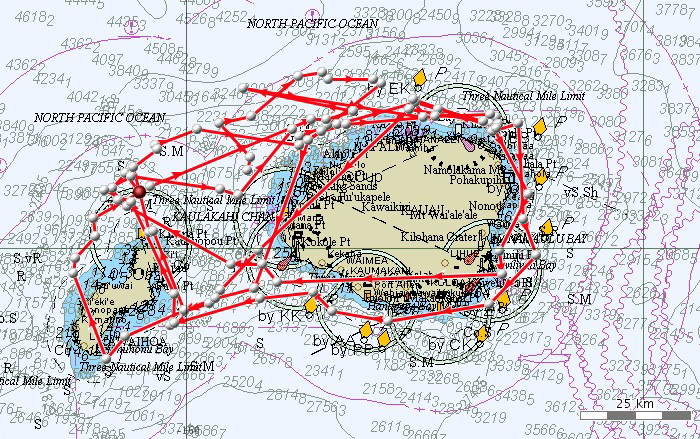
The map above shows movements for the last 9 days of the false killer whale we satellite tagged July 26th.
August 1st update
In the last two days we’ve had several encounters with bottlenose dolphins and rough-toothed dolphins and were able to deploy another depth-transmitting satellite tag on a rough-toothed dolphin.
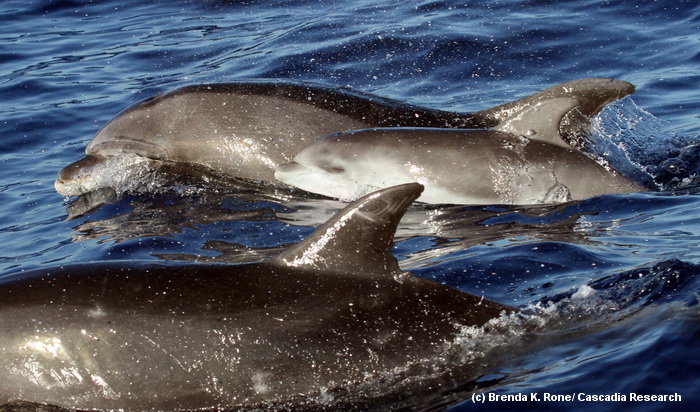
Bottlenose dolphin mother and newborn calf, August 1, 2013. Photo by Brenda Rone.
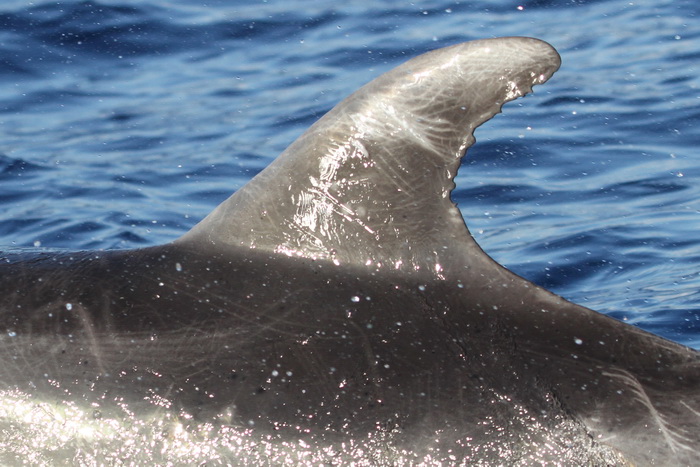
The dorsal fin of a very well-marked bottlenose dolphin, August 1, 2013. Photo by Amy Van Cise.
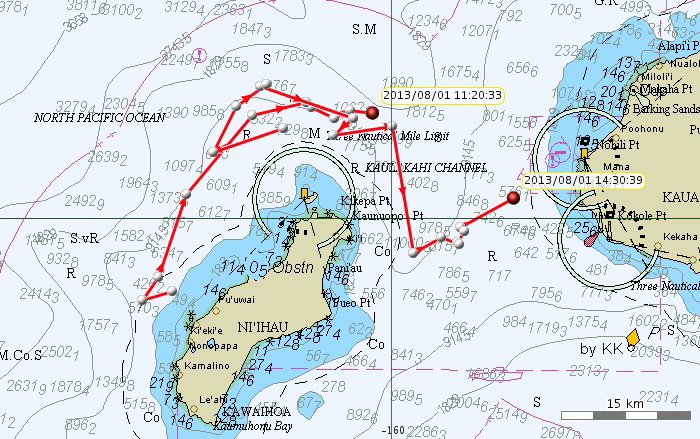
This map shows the movements of the two satellite-tagged rough-toothed dolphins over the last day.
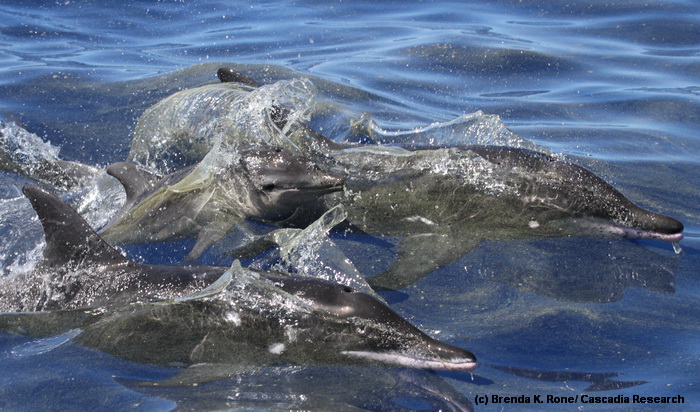
Rough-toothed dolphins, July 31, 2013. Photo by Brenda Rone
July 30th update
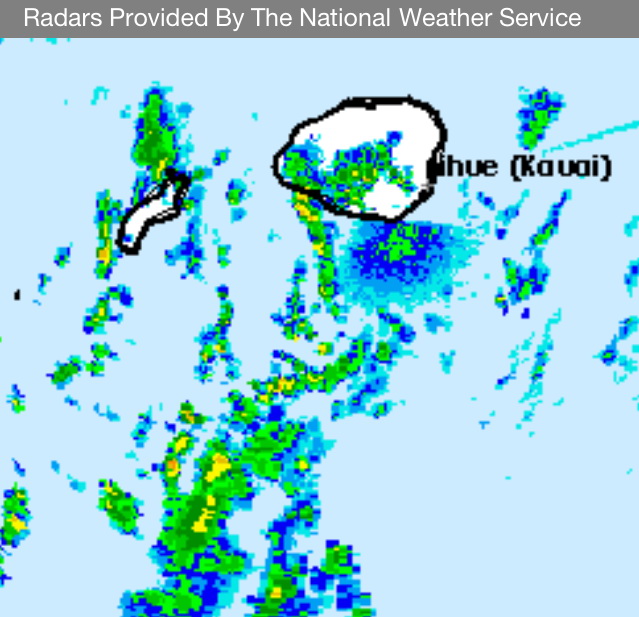
Today we are staying on land as the remnants of tropical storm Flossie move through the area, with heavy rainfall and strong winds. We are continuing to get movement information from both individuals satellite tagged so far this project.
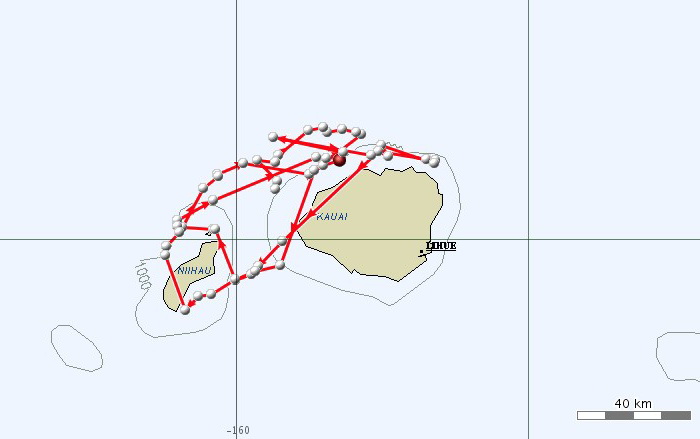
Movements of the satellite-tagged false killer whale since it was tagged on July 26th.
July 29th update
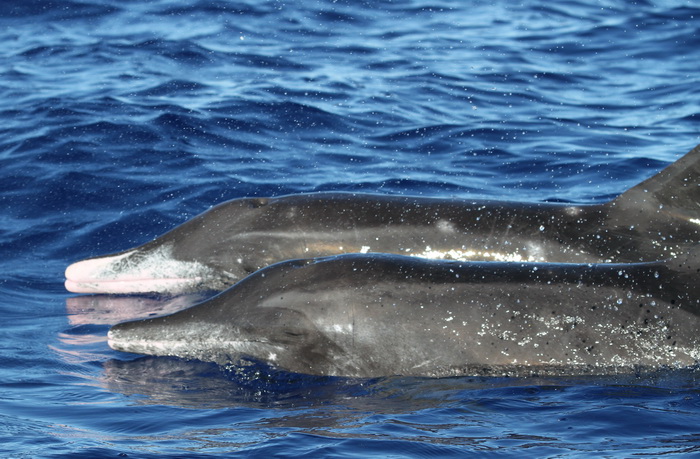
Rough-toothed dolphins, July 29, 2013. Photo by Amy Van Cise. Today we encountered three groups of rough-toothed dolphins, were able to photo-identify many of the individuals present, and deployed one depth-transmitting satellite tag, to track movements and record diving behavior.
July 28th update
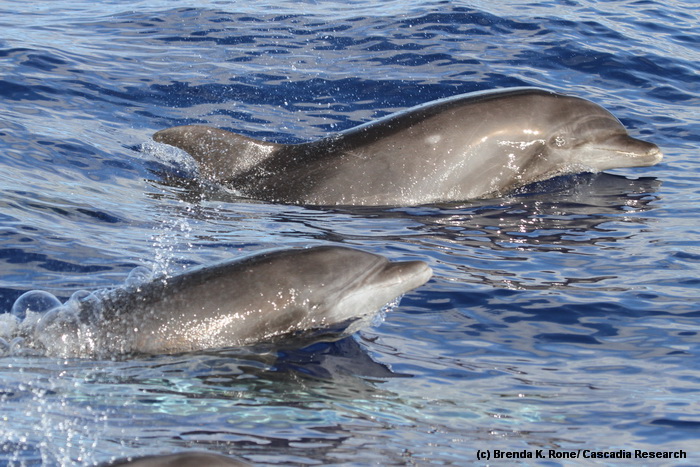
Bottlenose dolphins, July 28, 2013. Photo by Brenda Rone. Today we were restricted to relatively shallow areas by strong winds offshore, but encountered bottlenose dolphins and were able to photo-identify a number of individuals. For more information on bottlenose dolphins in Hawai‘i see our web page for this species.
July 27th update
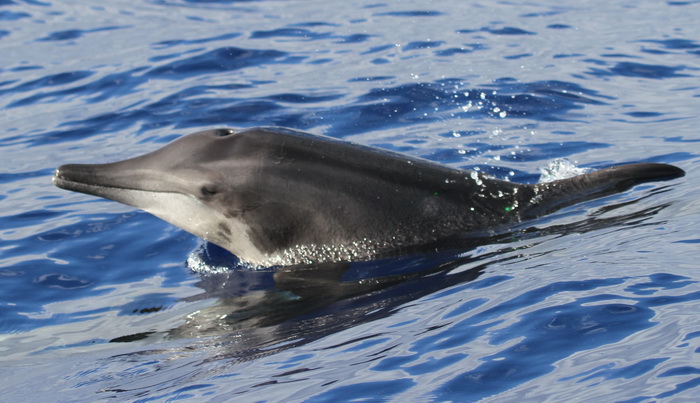
A rough-toothed dolphin, July 27, 2013. Photo by Amy Van Cise. The weather today was not as cooperative but we had five sighitngs, including two groups of rough-toothed dolphins, and we were able to photo-identify many of the individuals present. This species is very abundant in the channel between Kaua‘i and Ni‘ihau (for more information on rough-toothed dolphins in Hawai‘i see our web page on this species)
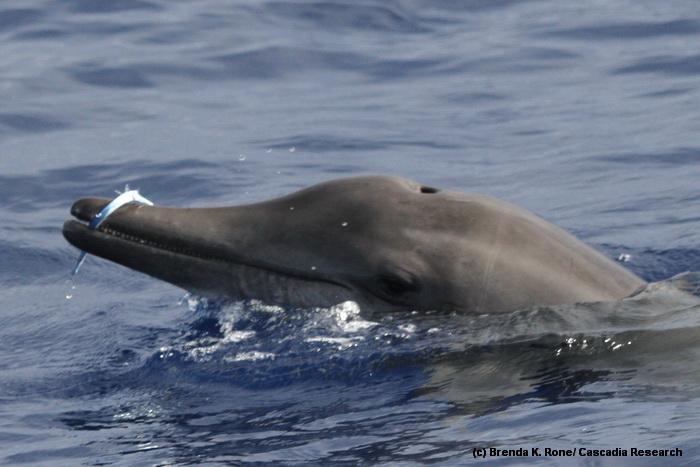
Rough-toothed dolphin with fish, July 27, 2013. Photo by Brenda Rone
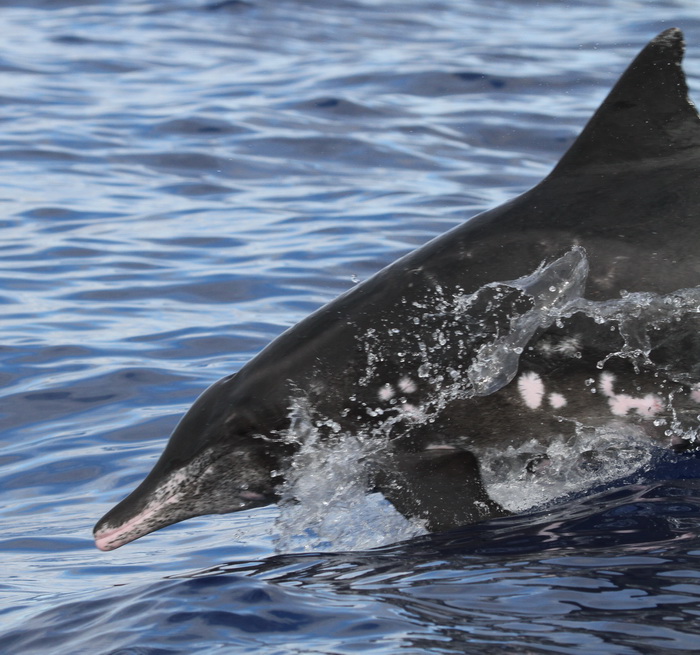
A large adult rough-toothed dolphin, July 27, 2013. Photo by Kim Rogers.
July 26th update
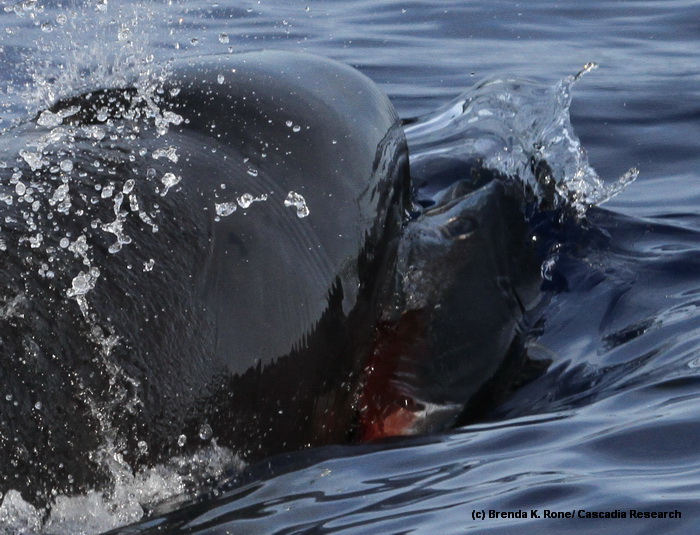
A false killer whale carrying the front part of a large tuna in it’s mouth, July 26, 2013. Photo by Brenda Rone.
A good start to our field project, with only our third encounter with false killer whales off the island of Kaua‘i in our 6 years of working here (our only previous encounters were in June 2012). This was our first encounter for the trip, a group of about a dozen false killer whales, spread out over several kilometers. We were able to deploy one satellite tag (one of the depth-transmitting tags), collect one biopsy sample for genetic studies, and photo-identify about 7 or 8 individuals.
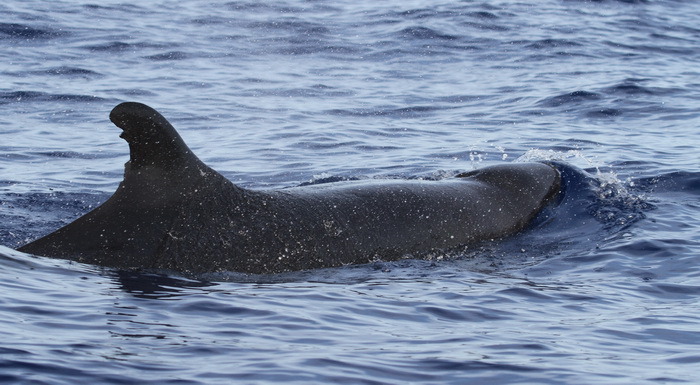
A false killer whale, July 26, 2013. Photo by Amy Van Cise. From previous work off the island this area is known to be an area of overlap between the Main Hawaiian Islands insular population of false killer whales (which was listed as Endangered last year), and the Northwestern Hawaiian Islands insular population, so we were very interested to see what population we had encountered. A quick comparison of photos of several distinctive individuals showed that we encountered some of the same individuals as last June, part of the Northwestern Hawaiian Islands population.
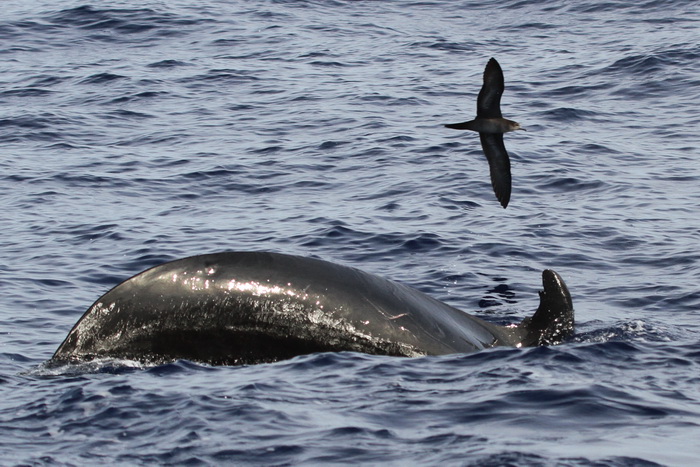
A false killer whale and a Bulwer’s Petrel, July 26, 2013. Photo by Andre Raine.
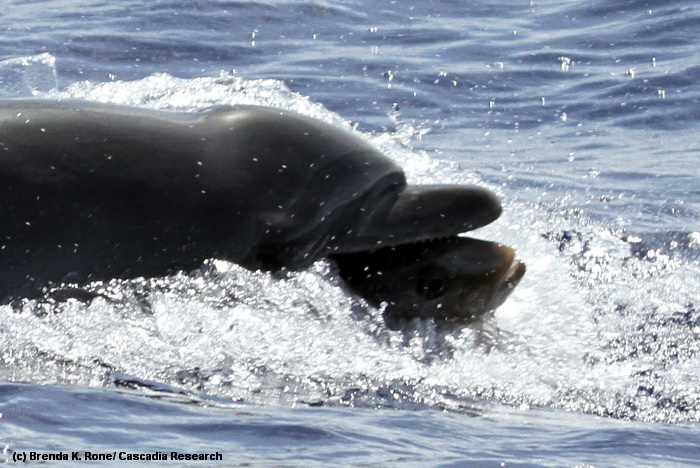
A bottlenose dolphin with a large fish in the mouth, July 26, 2013. Photo by Brenda Rone. We also encountered several groups of bottlenose dolphins and spinner dolphins, and obtained photos of this individual bottlenose ingesting a large fish.
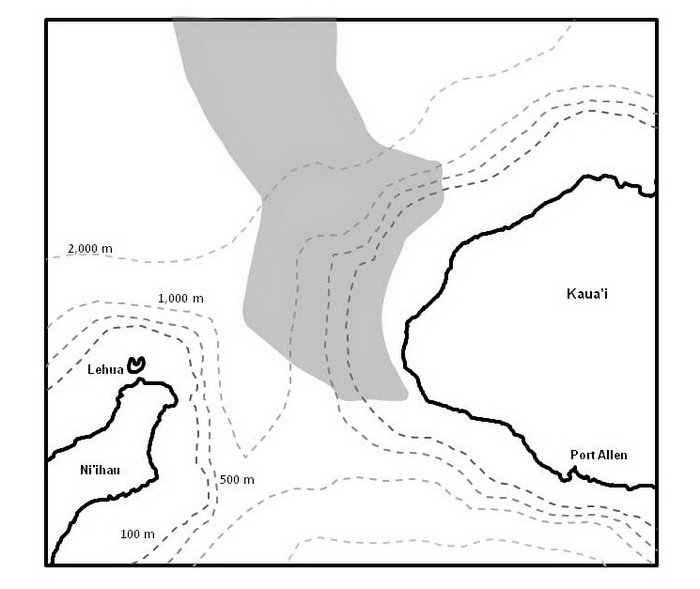
Our study area for the project. The Navy’s hydrophone range it shaded – 183 hydrophones are spread across the shaded area connected to the M3R system.
Sign up to our Facebook page if you want to receive notices of when information is posted and updates on other Cascadia projects.